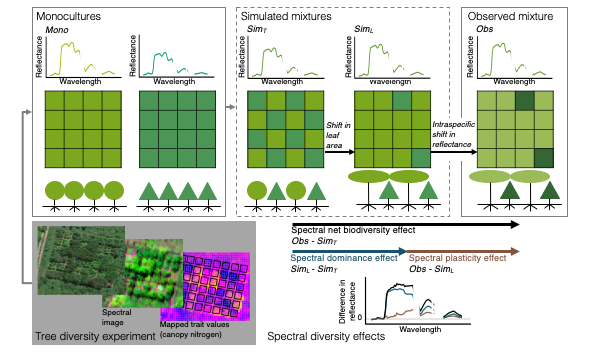
Remote spectroscopic imaging of a tree diversity experiment allows us to assess diversity effects on spectral reflectance, functionally important canopy traits (e.g. %N) and ecosystem functions (e.g. productivity) as well as underlying ecological processes. By simulating the spectra of mixed-species stands from monocultures, we can calculate the spectral net biodiversity effect (following a field-based approach) and partition novel, ecologically informative contributions to this net effect, such as spectral dominance and spectral plasticity effects. In this hypothetical example, two species (circles, triangles) are depicted in monoculture, simulated mixtures, and observed mixture. Each assemblage is illustrated in cross-section, from overhead (grid represents pixels), and as a mean reflectance spectrum.